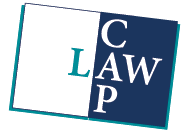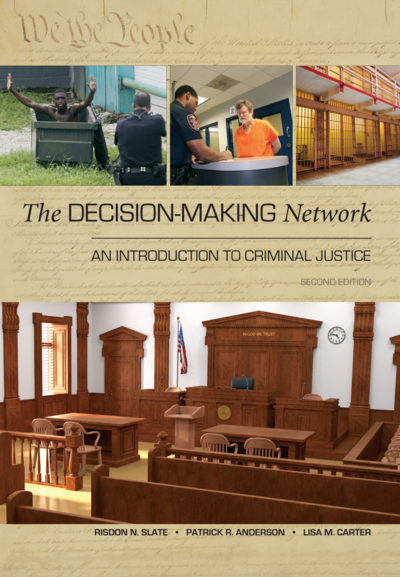The Decision-Making Network
An Introduction to Criminal Justice
Second Edition
by Risdon N. Slate, Patrick R. Anderson, Lisa Carter
2018
Tags: Introduction to Criminal Justice
Teacher's Manual available
734 pp $90.00
ISBN 978-1-5310-0298-5
eISBN 978-1-5310-1206-9
This new edition updates the first edition.
The Decision-Making Network presents criminal justice to undergraduate students as a network of interrelated decisions made by diverse actors in multiple agencies. Legislative decisions about what should be the content of the criminal law, police officers' decisions regarding investigation and arrest, prosecutors' decisions regarding whether to prosecute and what charges to bring, judges' decisions, appellate court decisions, juries' decisions, correctional decisions … all comprise the complex network of criminal justice.
This text examines criminal justice decisions in historical context with attention to the Constitutional values and principles which undergird American criminal justice. Students learn how crises often drive the making of law, the development of policies, and the practice of criminal justice. It examines the tensions between civil liberties and public safety, and it introduces the challenges of terrorism, immigration, drug enforcement, and other emerging issues which confront the criminal justice decision maker.
PowerPoint slides are available upon adoption of this book. A sample selection from the full set of 703 slides is available here. If you are a professor using this book for a class, please contact bhall@cap-press.com to request your slides.
Praise for the first edition:
Editorial Reviews
"There are many introduction to criminal justice textbooks; only a few can be considered "classics." This is one of those. When the late Don Newman conceived this text and when Pat Anderson joined him as a co-author, the approach was unique in getting students to consider not "what" criminal justice is but, rather, how decision-making at various points dynamically affects what we think of as the disparate segments of the criminal justice system. With the addition of Ris Slate in the contemporary version, the decision-making approach continues and is updated to today's contentious times in which legislative decisions made for ideological reasons result in public expectations at odds with pragmatic criminal justice decisions in the field. One of the most difficult tasks in teaching criminal justice is getting students to understand how ideological views of crime affect the practical nature of decision-making on the streets, in the offices, and around the courtrooms. By introducing these ideas at the level of an introductory course, this text makes a professor's job substantially easier."
—Frank P. Williams III, University of Houston-Downtown
"The Decision-Making Network is a refreshing alternative to the traditional introduction to criminal justice textbook. As an assistant professor teaching a minimum of four introductory level criminal justice courses per year I value the approach taken by Anderson and Slate in this new text. This book includes both the historical, procedural and constitutional issues necessary for a criminal justice textbook as well as a focus on the values and context surrounding the application of justice in our crime control system. The critical analysis of how social crisis drives public policy concerning crime control is especially inspiring and is sure to invigorate meaningful classroom discussion and enhance critical thinking skills in our students. This book provides not only an overview of the criminal justice system, as is expected of any introduction to criminal justice textbook, but also invites students to ask "Why does the system work the way it does?" and "Is this the best possible way of providing justice?" These are valuable skills for any student entering "the decision-making network" after graduation."
—Suzanne M. Godboldt, Ph.D., Mercyhurst College
Praise for the second edition: "This is my favorite text for my "Introduction to Criminal Justice" course because it realistically presents the complexity of the criminal justice system, illustrates through many concrete and current examples the competing values and goals of a variety of different stakeholders, and shows the importance of discretion in case processing. "Critical Thinking" and "Field Practice" boxes in each chapter, some of which concern failures of good decision-making, offer opportunities for students to explore the "messiness" of the criminal justice system and develop an understanding of why it necessarily is so complicated."
—Sharon Chamard, University of Alaska Anchorage
"The Decision-Making Network provides an introduction to the field of criminal justice from a rather unique lens, the lens of decision-making. As anyone who works in the field of criminal justice, or studies crime, crime policy, or criminal justice processes knows, at every phase of the system, decisions are important. Slate, Anderson, and Carter design this book so that a student approaching the study of criminal justice for the first time is quickly introduced to the importance of decision-making in the criminal justice process. Readers are then given real-world examples in every chapter of how those decision-making processes structure the function of the criminal justice system across policing, the courts, corrections, and juvenile justice. The examples they use in every chapter are current, interesting, and will keep the interest of students as they make the journey through the criminal justice system with the authors. Having read and used many books designed for Introduction to Criminal Justice classes, I think this one compares favorably with every one I've ever read, and is far better than most. Instructors choosing this book for their course will be happy they made that decision."
—David C. May, Professor of Sociology, Mississippi State University
Comp Copy If you are a professor teaching in this field you may request a complimentary copy.


